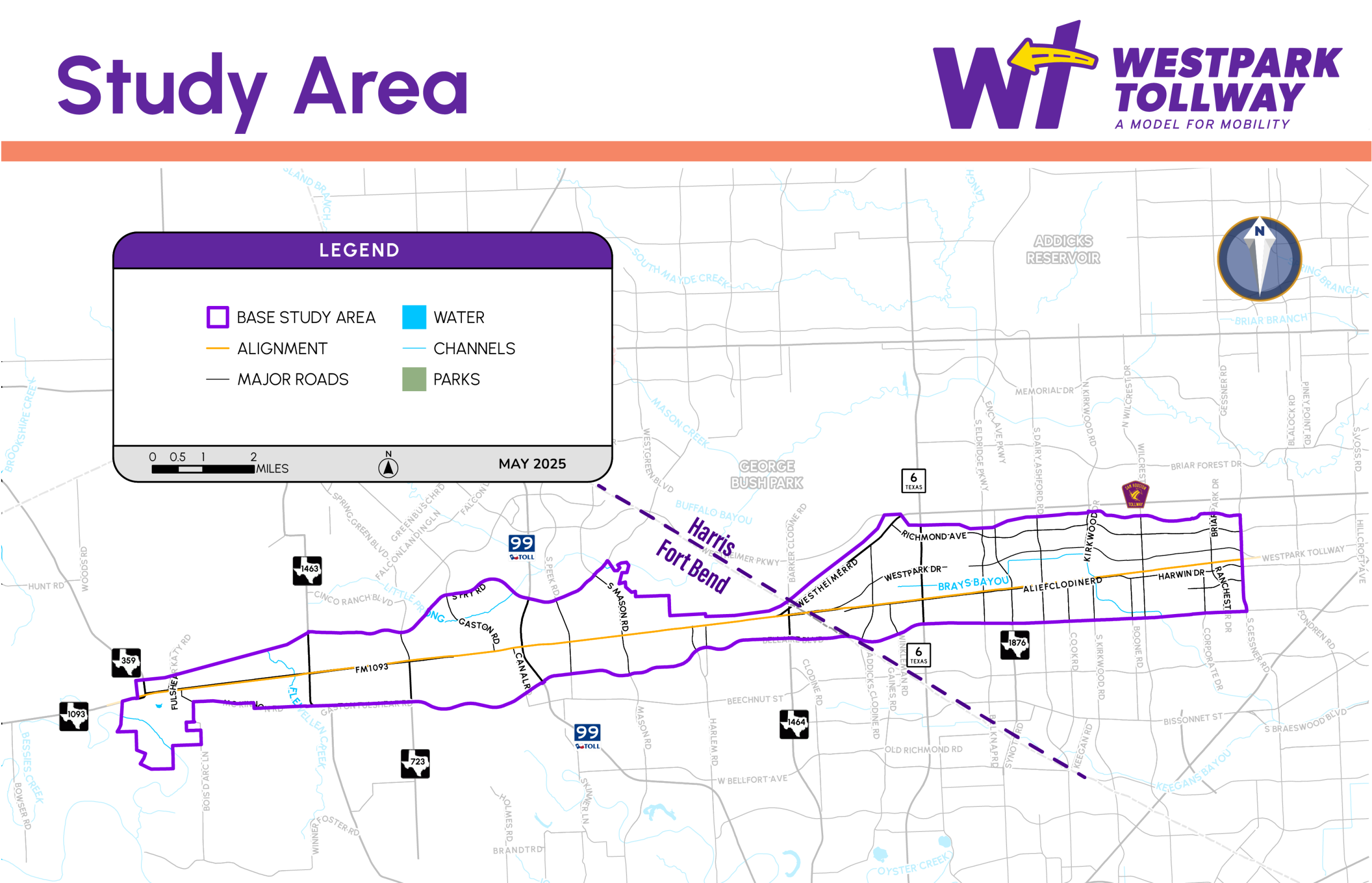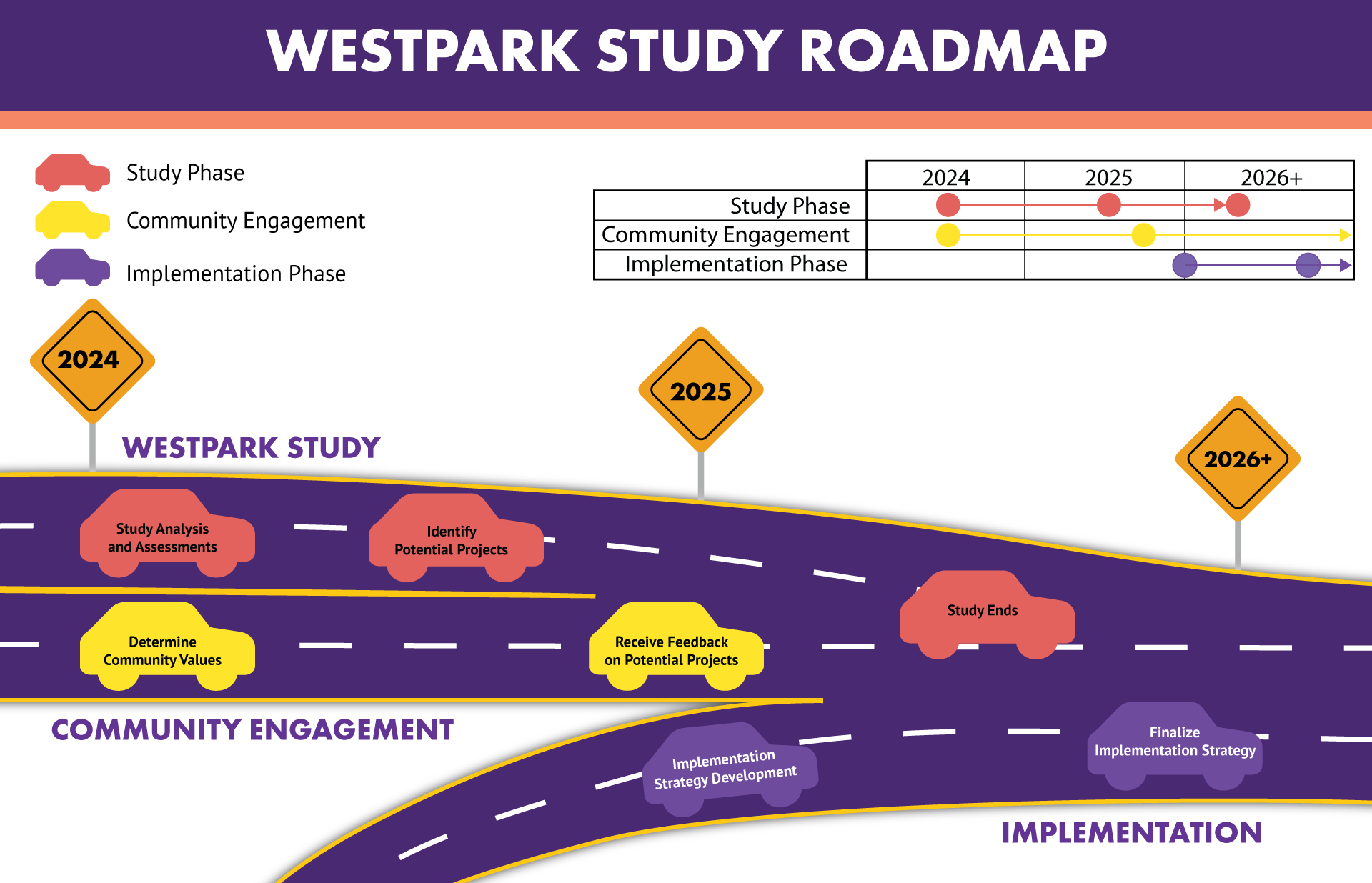HCTRA has partnered with METRO, the city of Houston, and Fort Bend County (study partners) on the study through a Memorandum of Understanding (signed September 19, 2023) to address their responsibility to meet the region’s mobility and connectivity needs.

The study will focus on the Westpark Tollway from South Gessner Road, just east of the Sam Houston Tollway, to FM 1093 / FM 359 / Main Street in Fulshear. This study area includes the planned extension of the Westpark Tollway to Fulshear.
FM 359 Intersection
The study will deliver a comprehensive plan to:
- Improve safety,
- Increase efficiency and mobility,
- Minimize impacts on people and the environment,
- Support existing communities, and
- Encourage economic growth along the Westpark Corridor.
Your input and engagement in the study is of the utmost importance. HCTRA and its study partners strive to provide multiple opportunities for you to provide feedback, as well as share your hopes, desires, and vision for the Westpark area.
You and your neighbors will play a key role in identifying and defining potential projects that reflect the values of the communities along the corridor!
The study team is currently identifying opportunities in the following areas:
- Understanding Existing Conditions – Exploring the current state of the corridor and its surroundings to inform future planning, design, and management of potential improvements.
- Exploring Traffic Solutions – Evaluating various options to find the most effective solutions for transportation challenges in the area.
- Improving Drainage – Identifying drainage issues and seeking ways to enhance stormwater management for a safer and more resilient corridor.
- Advancing Social, Economic, Environmental, and Equity Goals – Reviewing these key areas to guide recommendations that benefit the community and promote fairness.
Each part of the analysis focuses on a different topic:
- Social: This focuses on how the study’s recommendations can enhance the social structure, well-being, and quality of life for community members. It explores ways to strengthen community cohesion, improve health and education, increase housing options, boost public safety, and expand access to essential services.
- Economic: This assesses the economic opportunities created by the study’s recommendations. It looks at potential benefits like job creation, economic growth, increases in property values, and support for local businesses, while also considering any costs involved.
- Environmental: This analysis explores how the study’s outcomes can positively impact the natural environment. It aims to identify opportunities to improve air and water quality, reduce noise, protect wildlife, promote sustainable land use, and support healthy ecosystems.
- Equity: The equity analysis examines how different groups within the community can benefit from the study’s recommendations, ensuring that opportunities and positive impacts are fairly distributed. It considers how outcomes might vary based on factors such as race, income, age, gender, and disability, focusing on enhancing inclusivity and access for all.
Together, the social, economic, environmental, and equity analyses give a complete picture of how the study’s recommendations will affect people, the economy, the environment, and social equity, helping decision-makers make informed choices that balance these factors.

Study Purpose and Need
HCTRA and its study partners are committed to providing multiple opportunities for the public to share their values and vision for the Westpark Corridor study area. The goal of these engagement opportunities is for you to assist in defining outcomes of the study, ensuring the Westpark corridor thrives now and into the future.
The Purpose
The purpose of this study is to build consensus around a solution that improves mobility and provides significant local and regional benefits.
The Need
With more people using the Tollway and even more growth expected by 2030 and 2040, Harris County has a responsibility to meet the needs of today and the future.
This study seeks to understand and improve current and future transportation needs, support regional growth, enhance safety, promote sustainable development, and foster economic and community growth.
